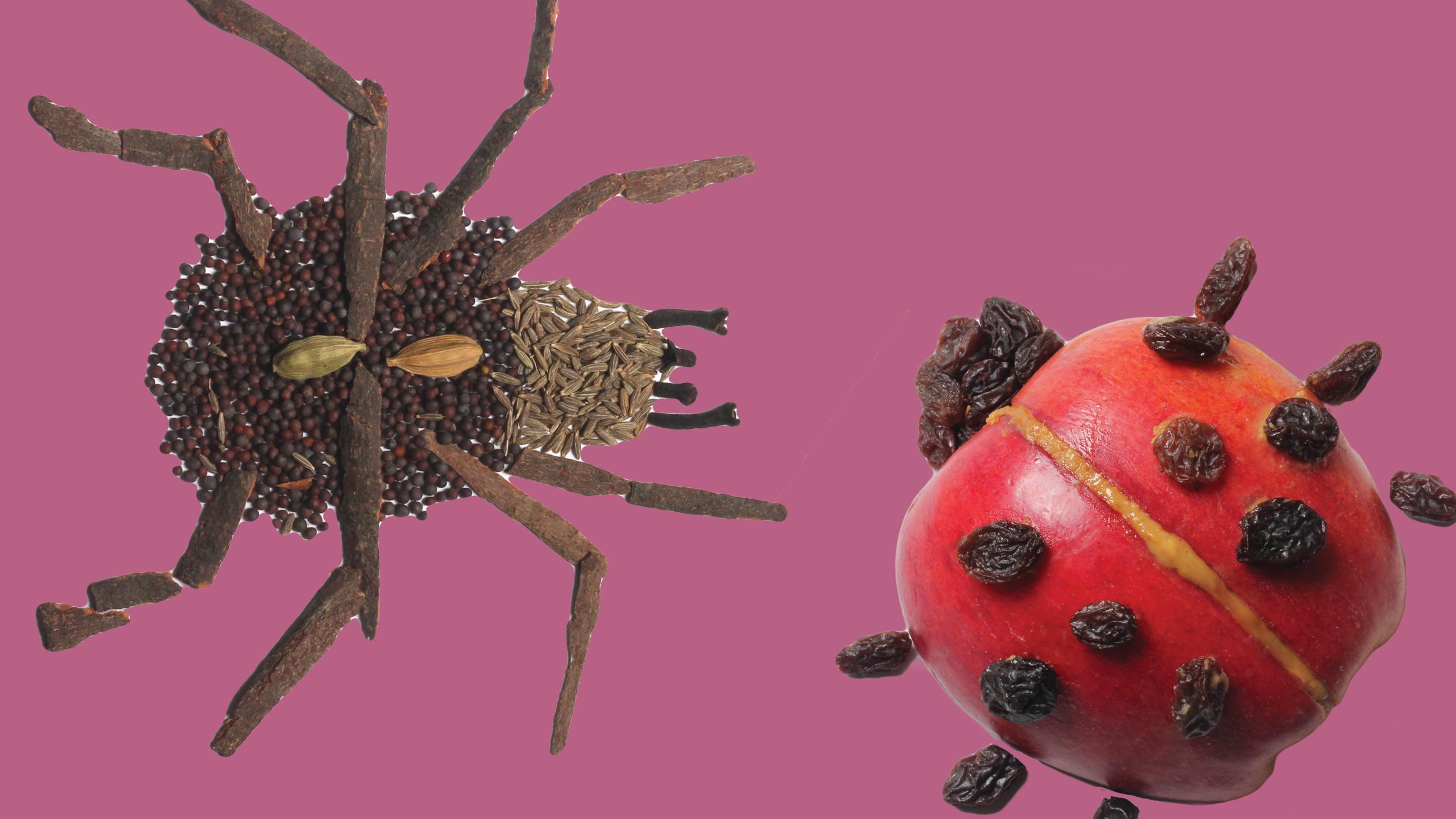By Jacob Dubé
When I was 11, I had a pet gecko and he ate crickets. My lizard—whom I aptly named Gecko—needed about a bag of them a week. We’d drive over to the Reptilia near me to order a couple dozen, and I’d sit in the back of the car watching them hop around in the bag. They didn’t look particularly appetizing to me—in fact they smelled pretty gross when I opened the bag—but when I dropped them in Gecko’s tank he would go buckwild.
Ten years later, I’m sitting in a food scientist’s home kitchen eating samplers of crunchy, fried cricket tofu covered in cricket-meat tomato sauce with a side of cricket ice cream. My only regret is not being able to try some mealworms.
People have been eating insects for thousands of years, but it’s been somewhat taboo in Canada. Now, some companies are trying to bring them into the limelight, and they taste pretty damn good.
In 2013, the Food and Agriculture Organization of the United Nations released a report that encouraged more people worldwide to start chowing down on some bugs. They praised their health and environmental benefits since it takes much less land and resources to grow a similar amount of insects compared to other meats. They also produce significantly less greenhouse gases.
According to Lee Cadesky, the co-founder of C-fu Foods, a company that specializes in creating edible insects based in Ryerson’s Science Discovery Zone, this report got more people seriously talking about insects as a viable replacement to other meats. The trouble was that the only products that were actually available to buy were dried snacks. “While people would say it was more sustainable than eating meat, there was no way to eat it instead of eating meat,” he said.
Cadesky, who studied food science at Cornell University, co-founded the company with his brother Eli in 2014 once he figured out how to make cricket tofu. They specialize in cricket flour, solid Textured Insect Protein, and a water-soluble and flour-based Insect Protein Concentrate. They use these products in all sorts of ways, from drinks to sausages to pasta sauce.
“It should be seamless, and insects should be invisible and supporting the texture in the food. We want to be making food out of insects and not food with insects,” he said.
The trick behind convincing people that they’re not eating bugs is texture. Cadesky says that flavour can be easily mimicked, but the feel of food is harder to manipulate, especially with something as small as insects. They can’t just remove parts they don’t want.
“Everyone has to figure out texture on their own, because texture is in the bones of the food,” Cadesky said. “We believe we can get that out of insects.”
Though his recipes can work on any kind of bugs (Cadesky said there are about 25,000 edible insects documented right now), the bug market in Canada is heavily focused on crickets. Though they are good, Cadesky said he thinks it might be more of a cultural phenomenon. Crickets are more present in media—Jiminy Cricket from Pinocchio and the Lucky Cricket from Mulan, to name a few—and therefore we’re more okay with eating them.
“Before we’re willing to eat something, we have to think it’s cute,” he said. “It’s a bizarre thing, but I do think there is a case to be made there.”
According to Cadesky, crickets are about 14 to 18 per cent protein, six to 10 per cent fat, and free of carbs. They’re also loaded with Vitamin B12, which aids in forming new blood cells, making them popular among vegetarians.
My first experiences with bugs weren’t great. Three years ago, I tried chocolate-covered crickets and mealworms. The taste made me gag. This past summer, I also tried a beef taco topped with whole roasted crickets, which was so dry that I desperately searched for water to wash down the legs stuck in my teeth.
Cadesky served me some cricket tofu that he crumbled up and fried with olive oil. It looked like grayer ground beef and tasted like a crunchier substitute with less fat. I couldn’t even tell it was 99 per cent cricket. Then he served me his other company’s, One Hop Kitchen, specialty: cricket bolognese. It was thick and rich, and I ended up filling the bowl of sauce with the rest of the tofu to add some more of its flavour. “The secret to it is really good tomatoes,” said Cadesky.
One jar of cricket bolognese retails for $10, but Cadesky wants to get that price down. Because the industry is so new, there isn’t enough research to figure out the cheapest and most efficient ways to grow and sell bugs, while meat and agriculture industries have decades of research to fall back on.
“My background is in dairy science, and I always laugh at how much information there is about cheese and dairy,” he said. “We don’t have anything like that for insects right now. And we won’t for a long time.”
Cadesky said that getting edible insects to the point of being something everyone has in their pantries is still a long way off, but they’re more and more accepted every year.
“You do it one cricket at a time,” he said. “But they add up quickly.”










Leave a Reply